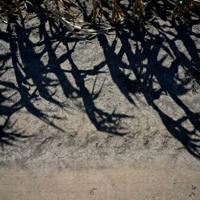Walking through her scorched cornfield in southeastern Romania, Iulia Blagu, a local farmer, hears the desiccated leaves crackle under her feet. The country is currently facing one of its worst droughts in recent times.
Having inherited over 300 hectares (750 acres) of land from her father in Urziceni, Blagu describes the last five years as “five years of fire”. She expressed her concerns, stating, “For Romanian agriculture, it’s not a question of if but when we will die.”
The drought has severely affected her harvest, with Blagu admitting that it feels like an unstoppable steamroller, forcing her to borrow money for the first time to pay her workers.
The scorching heat is not just limited to Romania. In Hungary, the entire country is on high alert due to the soaring temperatures. Hungarian farmers even led camels through Budapest to raise awareness about the impact of climate change on agriculture.
Southern and eastern Europe are currently grappling with persistent and recurrent drought conditions, as reported by the European Union. The Copernicus Climate Change Service has warned that 2024 may be the hottest year on record.
– ‘At God’s mercy’ –
While Romanian farmers have been promised compensation for the two million hectares of damaged farmland, one farmer described agriculture as a “lottery” and feels completely vulnerable to the whims of nature.
The dry spell has led to wells drying up, water restrictions being imposed, and lakes disappearing. Priest and villagers alike have resorted to praying for rain and attempting to revive springs to combat the parched conditions.
Blagu is adapting to the changing climate by experimenting with alternative crops like sorghum, coriander, and chickpeas, in addition to her usual wheat and sunflowers.
– ‘Romanian Sahara’ –
Further south by the Danube, a 100,000-hectare sandy area known as the “Romanian Sahara” is becoming a testing ground for new crops as the land transforms due to climate change. Romania is losing arable land each year, with fears that the south could become desertified in the next few decades.
A research station set up to make the sandy soil fertile has been providing expertise and seeds to farmers since 1959. With climate change worsening, the station’s mission of testing new species has become crucial to combat extreme weather.
The station’s head, Aurelia Diaconu, highlighted the cultivation of fruits like persimmons, dates, kiwi, and pistachios as examples of new crops being tested in the region.
However, irrigation is essential for these new crops, something that many Romanian farmers lack access to. Blagu, among them, emphasized the importance of water for agriculture in the region.





